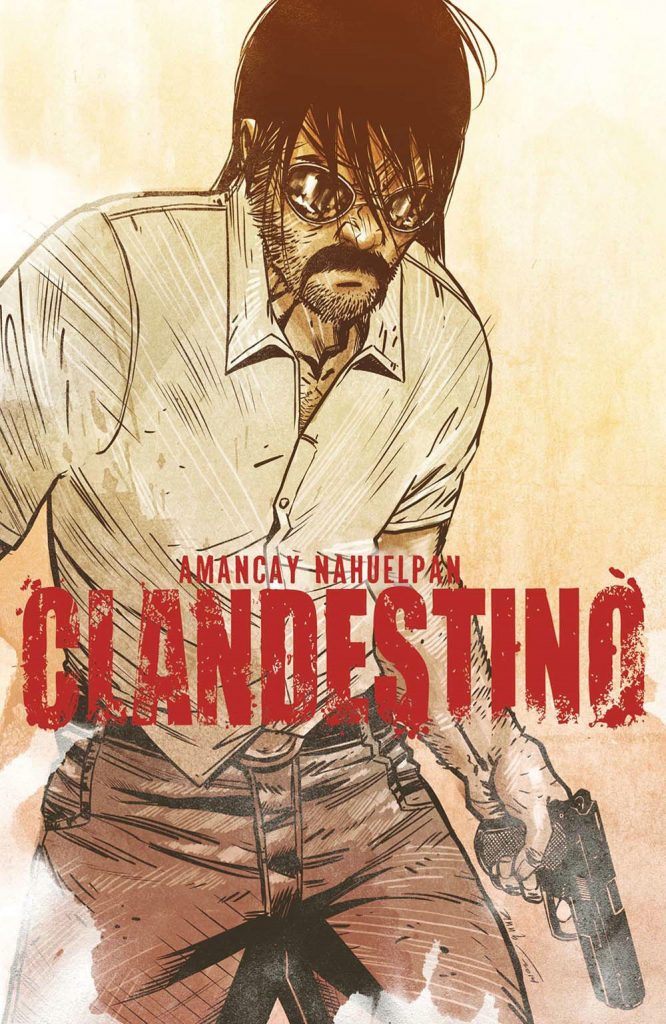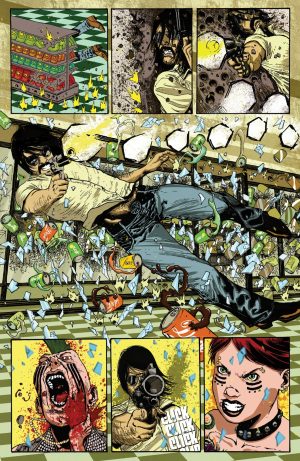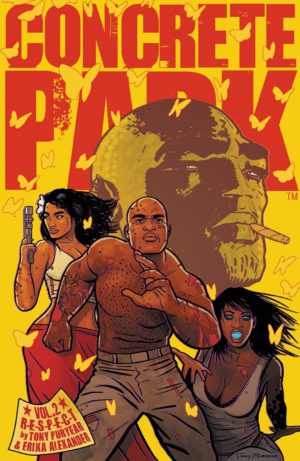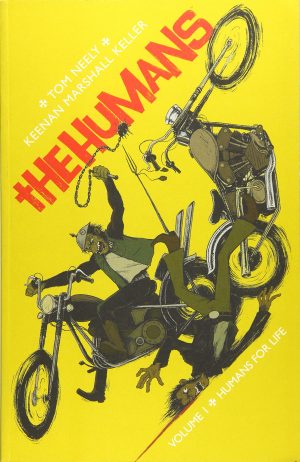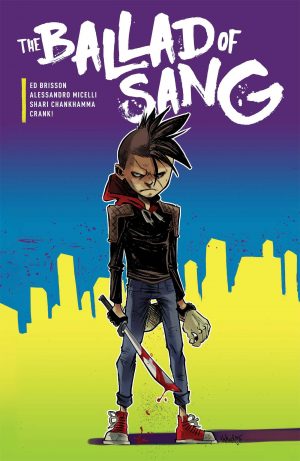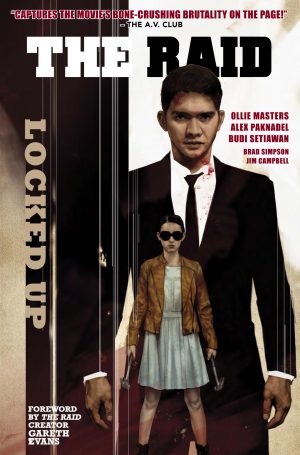Review by Ian Keogh
A visually inventive opening chapter introduces Amancay Nahuelpan’s meticulously constructed scenario of a Latin American country under military dictatorship, and what’s ranged against that. He uses television reports, newspaper reports, historical flashbacks, a recruitment poster for the Koyam rebels, iconography, oddly shaped panels coming together to form the outline of a gun… There’s no lack of vision from a creator grasping opportunity with both hands.
Quentin Tarantino’s action cinema and Howard Chaykin’s American Flagg are notable influences on that first chapter, although Chaykin homages diminish to TV report commentary updates as Clandestino comes into his own. He’s a rebel, recruited as a young boy shortly after his family was murdered 23 years previously during the coup, and as Naheulpan’s joyously violent fantasy continues it falls on him to unite Tairona’s revolutionaries to secure the country’s freedom. The type of man he is can be seen on Nahuelpan’s almost slow motion cinematic homage providing the sample art. It showcases the incredible energy and vibrancy he brings to page after page of fast moving action, which Nahuelpan rolls out with a loving touch. He uses the shorthand approach, knowing that what’s important for his story is what someone does, not who they are, and extended explanations just get in the way. As long as he keeps the story moving by maximising the action we’ll all be happy.
It’s a phenomenal page turner featuring betrayal, miraculous escapes, and a viewpoint that switches from Clandestino and allies to the ruling General and back again. The enthusiasm counts for more than polished technique, and carries Nahuelpan a very long way, glossing over some strange figurework and shaky perspective. Likewise, there’s a predictability to Clandestino, but the rush of the action compensates for that also all the way to retribution that was never in doubt. It’s excessive, it’s violent and it’s one hell of a thrill rush.
